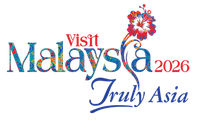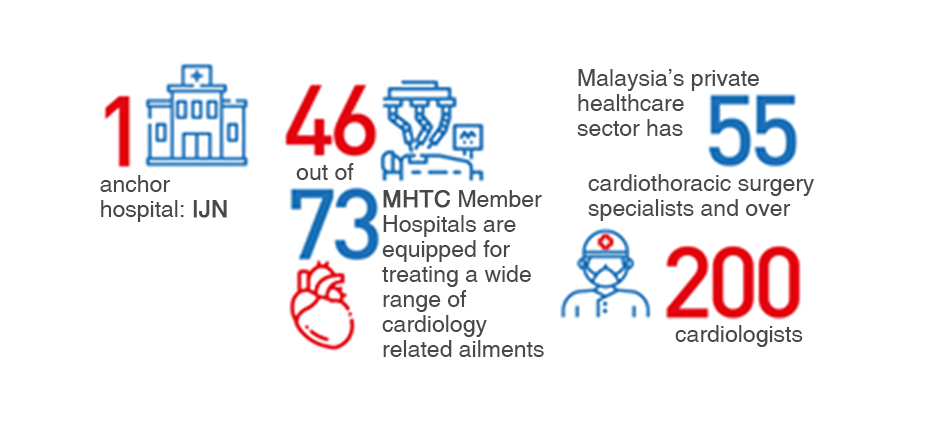
Travelling for health has grown substantially over the last decade. The number of healthcare travellers to Malaysia in 2018 was more than 1.2 million which was nearly double the number of healthcare travellers in 2011. With more and more tourists making the trip to another country to seek treatment, one may wonder why this happens in the first place.
There are a number of factors that contribute to healthcare travel. Other than more affordable cost of treatments, ease of travel and convenience, other drivers of travellers’ choice of destination include their unique treatment that influence or impact the access to quality healthcare.
Some of the driving forces of healthcare travel around the world include difficulties in securing appointments, inflation in healthcare costs, development in ease of travel, demand for treatment supported with the latest technology and the rise of the world’s ageing population.
On top of that, there is an increasing awareness that healthcare should be affordable, easily accessible, high quality and sustainable over the long-term and if that is not the case, citizens will travel overseas for the right kind of treatment.
There are a number of reasons that draw healthcare travellers from all over the world to Malaysia. These include the high-quality healthcare and facilities that are closely monitored by the Ministry of Health, the ease of access to high-quality healthcare which enables virtually no waiting time, affordable cost of healthcare, the ease of communication since almost everyone speaks English here, Malaysia’s status as a Global Halal Hub which ensures the use of porcine-free medical products, and seamless end-to-end services. To find out more about why Malaysia is the ultimate healthcare destination, click here.
History
The number of healthcare travellers to Malaysia has grown significantly over the years. You can trace back our medical history to our first hospital that was situated in Taiping, Perak, back in 1880. At the time, Taiping was the most modern city as it was a tin mining site.
The first medical school was opened in 1941 in Melaka, commemorating the beginning of a thriving healthcare system. With the increase of public and private healthcare facilities throughout the country over the next few decades, Malaysia became the benchmark within the Asian region due to the increase in medical expertise.
By 1996, the healthcare system in Malaysia achieved the capacity to provide healthcare services for 93% of the country’s population within a 5-kilometre radius. Our medical personnel are highly trained from reputable institutions around the world and have hours of surgery time under their belts.
The Formatation of MHTC
International patients flock to Malaysia for healthcare offerings provided by private hospitals. Once the healthcare travel industry started growing, there was a need for a dedicated entity to fill up the gaps, promote the industry, and be a bridge between the government and private sectors.
Throughout the years, MHTC has grown rapidly to become a world-renowned organisation that is responsible for establishing the Malaysia Healthcare brand.
MHTC has put multiple initiatives into place to further boost the quality of healthcare offered in Malaysia. "
1. MHTC Call Centre
Our call centre enables prospective travellers to make enquiries and seek further information and clarifications so that they may make the most informed decision on their choice of medical care providers, types of treatments available, suitable locations and more.
2. Malaysia Healthcare Concierge and Lounge (MCL)
The MCL is a one-stop centre for patients to refer to upon their arrival in Malaysia. Upon early notice, our personnel will meet you at the aerobridge and personally assist you with Immigration and Customs, baggage claims, and other related patient services. You will also be hosted in our lounge while awaiting transportation to your accommodation or medical facility. Our concierge provides assistance and facilitates your journey in what could potentially be unfamiliar surroundings, further smoothening the process for you.
3. eVISA (Medical)
We worked with the Immigration Department of Malaysia and developed a unique, electronic visa or eVISA (Medical) for inbound healthcare travellers. This innovative system enables a faster and more convenient process for visa applications and approvals.
4. Malaysia Healthcare representative offices and localised outreach
To date, Malaysia Healthcare has representative offices in Vietnam, Myanmar, and Indonesia to further entrench the Malaysia Healthcare brand among prospective medical travellers in these countries. This initiative is supported by localised social media campaigns and microsites.
5. The Healthcare Traveller Profile
It’s no surprise that such a clearly defined and seamless structure has resulted in an influx of health travellers from all over the world. Among these, the top 10 (in no particular order) include; India, Singapore, Japan, Bangladesh, Philippines, Australia, United States, United Kingdom, China, and Indonesia.
The fact that Malaysia attracts patients from developed nations such as the United States, the United Kingdom, Australia, Singapore, and Japan, speaks volumes about the positive perception of trust and credibility that prevails for Malaysia’s healthcare industry.
Treatments offered
There are multiple treatments that healthcare travellers seek when in Malaysia such as orthopaedics, cardiology, oncology, fertility treatments, neurology, and overall health screenings.
Out of these, fertility and cardiology are the main sought after treatments.
With an aim to position Malaysia as the Fertility Hub of Asia, we are taking extensive measures to attract healthcare travellers into Malaysia.
This is driven by the removal of China’s one-child policy which now creates a market of over 90 million couples of which half are over the age of 40, which means that natural conception may be a challenge, causing them to seek fertility treatments.
Malaysia is best positioned to tap on this demand given its inherent strengths, (affordability, accessibility, convenience, technology, etc.) and proven track record in fertility treatments.
Did you know that only 23 fertility centres in the world are International Reproductive Technology Accreditation Committee (“RTAC”) certified, and 5 of them are located in Malaysia?
Malaysia’s reputation for affordability also holds true with fertility treatments reasonably priced at USD4,000-USD5,000 per cycle.
Malaysia also aims to position itself as “the Heartbeat of Asia” primarily due to the long-standing existence of the highly acclaimed National Heart Institute or Institut Jantung Negara (IJN). IJN has been at the forefront of pioneering various cardiology related medical advancements since its inception in 1992. These groundbreaking achievements have placed Malaysia on not only the regional but also global map for its excellence in cardiology related treatment.

Treatments offered
As you can see, there are multiple factors that make Malaysia the perfect healthcare travel destination. If you are thinking of seeking healthcare in Malaysia and need someone to talk to, feel free to drop us an email at callcentre@mhtc.org.my or visit our website.
Note: This article is provided by Malaysia Healthcare Travel Council in collaboration with Tourism Malaysia.